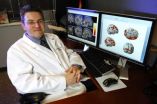(Press-News.org) CAMBRIDGE, Mass. -- MIT chemical engineers have designed a new type of drug-delivery nanoparticle that exploits a trait shared by almost all tumors: They are more acidic than healthy tissues.
Such particles could target nearly any type of tumor, and can be designed to carry virtually any type of drug, says Paula Hammond, a member of the David H. Koch Institute for Integrative Cancer Research at MIT and senior author of a paper describing the particles in the journal ACS Nano.
Like most other drug-delivering nanoparticles, the new MIT particles are cloaked in a polymer layer that protects them from being degraded by the bloodstream. However, the MIT team, including lead author and postdoctoral associate Zhiyong Poon, designed this outer layer to fall off after entering the slightly more acidic environment near a tumor. That reveals another layer that is able to penetrate individual tumor cells.
In the ACS Nano paper, which went online April 23, the researchers reported that, in mice, their particles can survive in the bloodstream for up to 24 hours, accumulate at tumor sites and enter tumor cells.
The new MIT approach differs from that taken by most nanoparticle designers. Typically, researchers try to target their particles to a tumor by decorating them with molecules that bind specifically to proteins found on the surface of cancer cells. The problem with that strategy is that it's difficult to find the right target — a molecule found on all of the cancer cells in a particular tumor, but not on healthy cells. Also, a target that works for one type of cancer might not work for another.
Hammond and her colleagues decided to take advantage of tumor acidity, which is a byproduct of its revved-up metabolism. Tumor cells grow and divide much more rapidly than normal cells, and that metabolic activity uses up a lot of oxygen, which increases acidity. As the tumor grows, the tissue becomes more and more acidic.
To build their targeted particles, the researchers used a technique called "layer-by-layer assembly." This means each layer can be tailored to perform a specific function.
When the outer layer (made of polyethylene glycol, or PEG) breaks down in the tumor's acidic environment, a positively charged middle layer is revealed. That positive charge helps to overcome another obstacle to nanoparticle drug delivery: Once the particles reach a tumor, it's difficult to get them to enter the cells. Particles with a positive charge can penetrate the negatively charged cell membrane, but such particles can't be injected into the body without a "cloak" of some kind because they would also destroy healthy tissues.
The nanoparticles' innermost layer can be a polymer that carries a cancer drug, or a quantum dot that could be used for imaging, or virtually anything else that the designer might want to deliver, says Hammond, who is the Bayer Professor of Chemical Engineering at MIT.
Other researchers have tried to design nanoparticles that take advantage of tumors' acidity, but Hammond's particles are the first that have been successfully tested in living animals.
The researchers are planning to further develop these particles and test their ability to deliver drugs in animals. Hammond says she expects it could take five to 10 years of development before human clinical trials could begin.
Hammond's team is also working on nanoparticles that can carry multiple payloads. For example, the outer PEG layer might carry a drug or a gene that would "prime" the tumor cells to be susceptible to another drug carried in the particle's core.
INFORMATION: END
Ecstasy – the illegal "rave" drug that produces feelings of euphoria and emotional warmth – has been in the news recently as a potential therapeutic. Clinical trials are testing Ecstasy in the treatment of post-traumatic stress disorder.
But headlines like one in Time magazine's health section in February – "Ecstasy as therapy: have some of its negative effects been overblown?" – concern Ronald Cowan, M.D., Ph.D., associate professor of Psychiatry.
His team reports in the May issue of Neuropsychopharmacology that recreational Ecstasy use is associated with a chronic ...
Boston, MA – A common component in webcams may help drug makers and prescribers address a common side-effect of drugs called cardiotoxicity, an unhealthy change in the way the heart beats. Researchers at Brigham and Women's Hospital (BWH) have used the basic webcam technology to create a tool to look at the effects of medications in real time on heart cells, called cardiomyocytes. These findings were published in the journal, Lab on a Chip on April 11, 2011.
Researchers developed a cost-effective, portable cell-based biosensor for real time cardiotoxicity detection using ...
An ancient, bipedal hominid needs a new nickname. Paranthropus boisei, a 2.3 million to 1.2 million-year-old primate, whom researchers say is an early human cousin, probably didn't crack nuts at all as his common handle suggests.
"Nutcracker Man" most likely ate grass and possibly sedges, said geochemist Thure Cerling, lead author of a study published in the May 2 online edition of the journal Proceedings of the National Academy of Sciences.
Cerling and colleagues determined P. boisei's diet by analyzing carbon isotope ratios in the tooth enamel of 24 teeth from 22 ...
WALNUT CREEK, Calif.—Fungi play significant ecological and economic roles. They can break down organic matter, cause devastating agricultural blights, enter into symbiotic relationships to protect and nourish plants, or offer a tasty repast. For industrial applications, fungi provide a source of enzymes to catalyze such processes as generating biofuels from plant biomass. One large fungal group with such enzymes are the rust plant pathogens which cannot survive on their own so they use crops as hosts, leading to reduced yields and potentially hindering efforts to grow biomass ...
Durham, NC – Most of us wouldn't consider slow-moving snails to be high-metabolism creatures. But at one point in the distant past, snail metabolism sped up, says a new study of marine snails in the journal Paleobiology.
"Many of the marine snails we recognize today — such as abalone, conchs, periwinkles and whelks — require more than twice as much energy to survive as their ancestors did," said co-author Seth Finnegan of the California Institute of Technology.
The findings come from a new analysis of snail fossils formed one to two hundred million years ago, during ...
LOS ANGELES, May 3, 2011 – When it comes to healthy snacking and weight management, a new study bolsters the long-held view that not all calories are created equal. According to nutrition researchers at UCLA, choosing to snack on pistachios rather than pretzels as part of a healthy diet not only supports your body mass index (BMI) goals, but can support heart health too.
The study, recently published in the Journal of the American College of Nutrition is especially significant in today's diet as snack foods account for more than a quarter of the total caloric intake ...
Rutgers researchers have developed an innovative new treatment that could help minimize nerve damage in spinal cord injuries, promote tissue healing and minimize pain.
After a spinal cord injury there is an increased production of a protein (RhoA) that blocks regeneration of nerve cells that carry signals along the spinal cord and prevents the injured tissue from healing.
Scientists at the W.M. Keck Center for Collaborative Neuroscience and Quark Pharmaceuticals Inc. have developed a chemically synthesized siRNA molecule that decreases the production of the RhoA protein ...
New Rochelle, NY, May 3, 2011—Researchers at last month's AACR conference in Orlando demonstrated that they are intensifying their efforts to identify and validate various types of biomarkers that are detectable in readily accessible bodily fluids such as blood and urine, reports Genetic Engineering & Biotechnology News (GEN). The goal is to detect biosignatures that are more specific and sensitive than existing diagnostic modalities, according to the May 1 issue of GEN (http://www.genengnews.com/gen-articles/cancer-detection-improved-with-noninvasive-testing/3639/).
"The ...
Texas Bill Would Raise Speed Limit on Some Texas Highways to 85 MPH
A bill recently passed in the Texas House of Representatives would raise the speed limit on some Texas highways from 80 to 85 mph -- a move that highway safety advocates are already cautioning against. The Texas Senate is currently considering a similar measure.
The Lone Star State already has over 500 miles of highways with speed limits set at 80 mph -- the highest in the nation, along with certain Utah highways. Critics say that the move would be tantamount to a license for motorists and truckers ...
Plants adapt to the local weather and soil conditions in which they grow, and these environmental adaptations are known to evolve over thousands of years as mutations slowly accumulate in plants' genetic code. But a University of Rochester biologist has found that at least some plant adaptations can occur almost instantaneously, not by a change in DNA sequence, but simply by duplication of existing genetic material.
Justin Ramsey's findings are published in the current Proceedings of the National Academy of Sciences.
While nearly all animals have two sets of chromosomes—one ...



